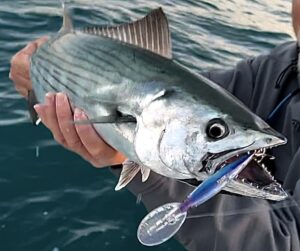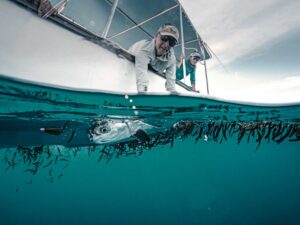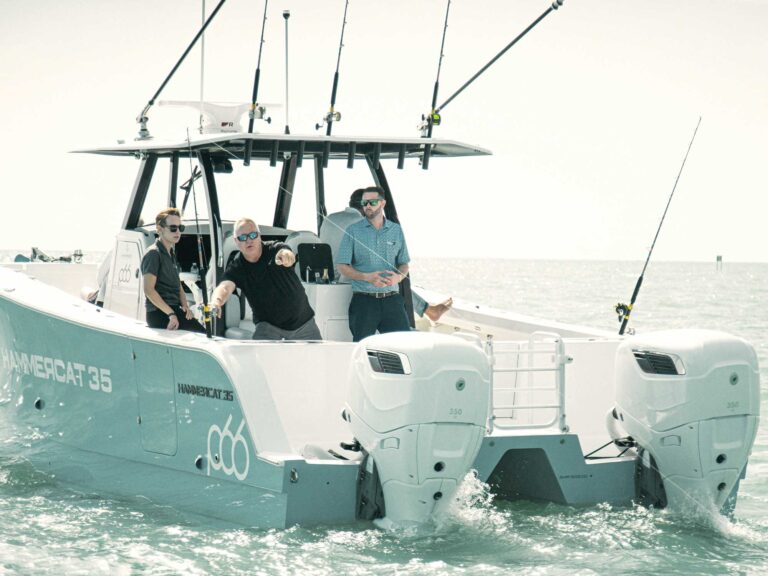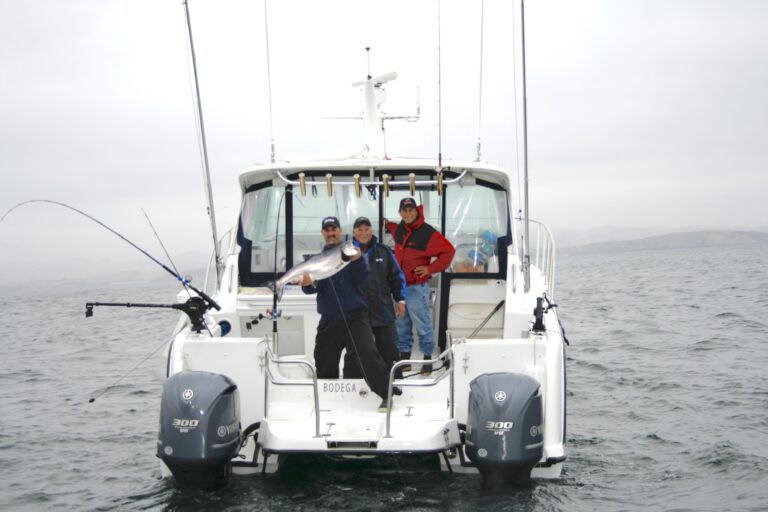Salt and water – keep those two things in mind if you want to keep your gear in tip-top shape. This is obvious, isn’t it? If it is, then why do many anglers have maintenance issues? It’s because salt and water aren’t as easy to get rid of as some might think.
**Rods
**Keeping a fly rod in good shape is about as easy as maintenance gets. Start by always storing the rod in its sock and a hard tube of some kind. After you use the rod, clean it. Wash the salt off and let the rod dry completely before putting it in the cloth bag. If you put wet, salt-coated rods in the bag, you’ll eventually transfer enough salt that the bag itself can corrode the rod guides and/or reel seat.
When washing equipment, whether it’s a rod, reel, pliers or whatever, a quick blast from a dockside hose may not be worthless, but it’s close – likely driving as much salt into crevices as it washes off. The best method is to use warm water with a mild detergent-free soap and a washcloth, paying particular attention to rod guides and feet, the cork grip and the reel seat. On the latter, move bands and locking rings back and forth to clear any salt under them. Rinse with warm water.
I recommend that you give ferrules on graphite rods, whether the spigot or tip-over-butt type, a light coating of paraffin as well. The paraffin serves two purposes. First, it provides some lubrication and reduces wear from regular assembly and disassembly. Second, a light coating of paraffin helps prevent binding.
Occasionally, check guides for wear (grooving from line) and damage (bending, a loose or missing ring, or a broken or corroded foot), and replace if necessary.
**Reels
**Considering that virtually all reels are constructed of at least some parts that can corrode, and that they have countless corners and crevices for salt and moisture to hide, they are remarkably durable tools. Yet I’ve seen corrosion on even the finest of reels. I suggest starting to maintain your reel even before you load backing and line on it. Coat it thoroughly with a corrosion-resistant product, such as Boeshield. Spray the inside of the spool, any ventilation holes, and the insides and outside of the frame. Be careful not to get it on tiny springs, drag surfaces or small bearings. Some lubricants/ rust preventatives remain liquid or leave a very thin coating, but Boeshield leaves a thicker, waxy layer that’s ideal for protection but not so great for lubrication or on a drag.
Keep your reels covered when not in use. It pains me to see anglers set their reels on the ground to string the rod. If you can’t keep the reel off the ground, at least toss your hat down and put the reel on that. Besides getting grit inside the reel, it’s easy to scratch through the outer coating on many reels, which quickly results in corrosion. If any scratches have completely cut through the anodizing, I suggest covering those areas with clear fingernail polish to slow rusting.
Reels (or rods or lines, for that matter) don’t necessarily need cleaning each day of a trip, but I do recommend a thorough cleansing afterward. If you’ve caught a few fish that get the backing wet, don’t just wash the outside of the reel. Strip off the line and at least the backing that got wet into the sink or onto the shower floor (be careful to not tangle the backing, or you’ll test your patience) or some sort of spool (there are commercial products for removing line and backing for washing and then reinstalling). Wash the reel and line with the same kind of soap you use on the rod. Rinse thoroughly, and spool the line back onto the reel. Remove the reel spool, and make sure the inside of the reel is clean and free of salt and sand.
Following the manufacturer’s suggestions, relube the drag if necessary and check and relube any shafts, springs, bearings and the like that may need attention. For crank handles, a drop of light machine oil usually does the trick. Don’t overlube, or you’ll simply attract grit, which causes more problems. Pay attention to the ball bearings – if they start sounding/feeling rough, they need attention. Typically, you have to return the reel to the manufacturer to replace the bearings.
When storing reels, you should back the drag off completely. Cork drags can take a set if left under pressure for long periods of time.
**Lines
**Fly lines are semidisposable, which is all the more reason to take care of them. The majority of lines are made of an outer layer of PVC or a polymer over one of several core materials. Chemicals, excessive exposure to heat and sunlight, and abrasion can damage them.
Solvents damage fly lines pretty quickly. Bug dope is particularly harmful, so if you spray or rub it on, clean your hands well before fishing. If you’re fishing from the back of a boat, keep an eye out for problems, including oil and grease on the outboard and steering cables, as well as leaky gas tanks.
Keep fly lines out of the sun as much as possible when not in use. The plasticizers that keep the line coating supple break down, causing the line to stiffen and crack prematurely.
Standing on your fly line can cause problems beyond ruining a cast. A rough nonskid boat deck can abrade a fly line instantly. Also, sliding your feet over the line can twist it.
Keep your lines clean. If you notice the line “sticking” in the guides, stop and clean it. Lacking anything better, wrap your shirttail around it and pull the line through it a couple of times. For lines with self-lubricating coatings, microabrasive pads (such as those made by Scientific Anglers) are great for removing caked-on algae, salt and other debris. After the day’s fishing, do a more thorough job. Wash the line with soap and warm water, pulling it through a soapy rag a few times. Rinse it well and put it back on the reel.
Line coatings and conditioners are needed less than they once were. Today’s fly lines are largely self-lubricating, and removing any built-up surface crud restores them to like-new condition. If you are particularly fond of using a commercial coating/cleaner, I recommend sticking with one made specifically for fly lines. A chemical made for another purpose may be ineffective and, worse, damaging.
**Flies
**It’s not uncommon for a saltwater angler to keep dozens, if not hundreds, of flies ready for use. We’re becoming more like trout anglers every year, having to “match the hatch” with just the right size and color of fly.
Hooks are susceptible to corrosion. Even stainless-steel hooks vary in their ability to withstand salt. It’s best to keep flies as dry as possible. I try not to put used flies back into the boxes until they’ve been rinsed off with warm water and dried. If the inside of your fly boxes get soaked, don’t just close them and put them away. Wash and dry them completely first.
**Accessories
**If you carry pliers, a knife or similar accessories, they should be looked after, too. Use the same warm, soapy water, then rinse them well in reasonably hot water before letting them air dry, relubricating anything necessary and storing them for the next trip.
Pay special attention to storage systems. I’ve mentioned rod bags, but reel cases, tackle bags, plier sheaths and the like can cause similar problems. It does little good to clean your reel and then store it inside a damp, salt-soaked case. Most reel covers are made of neoprene, which can be washed easily and dried quickly. A nylon tackle bag that sits on the deck of a boat can get soaked pretty easily, especially the bottom. Every once in a while, you should dump its contents and wash it.









